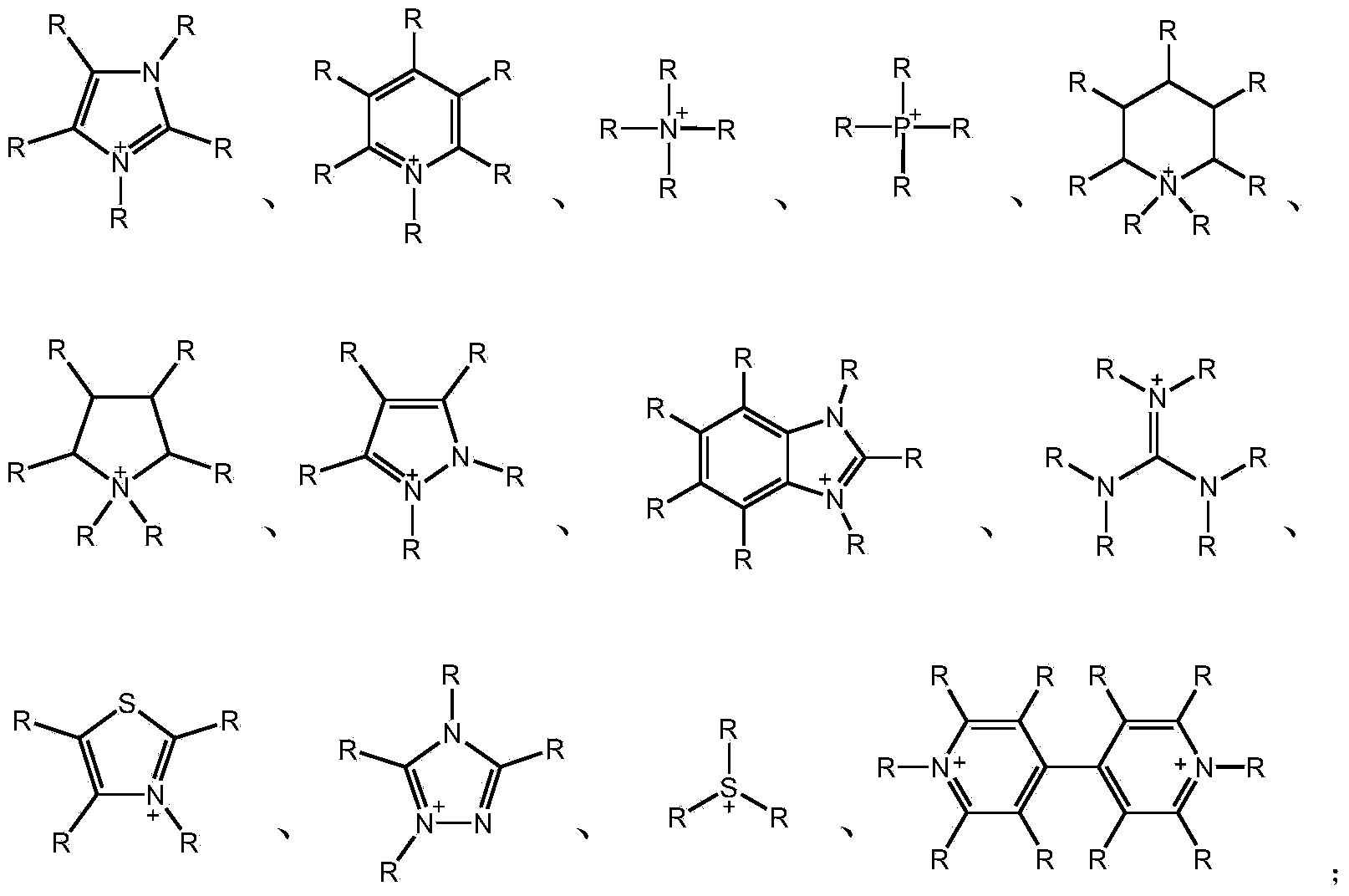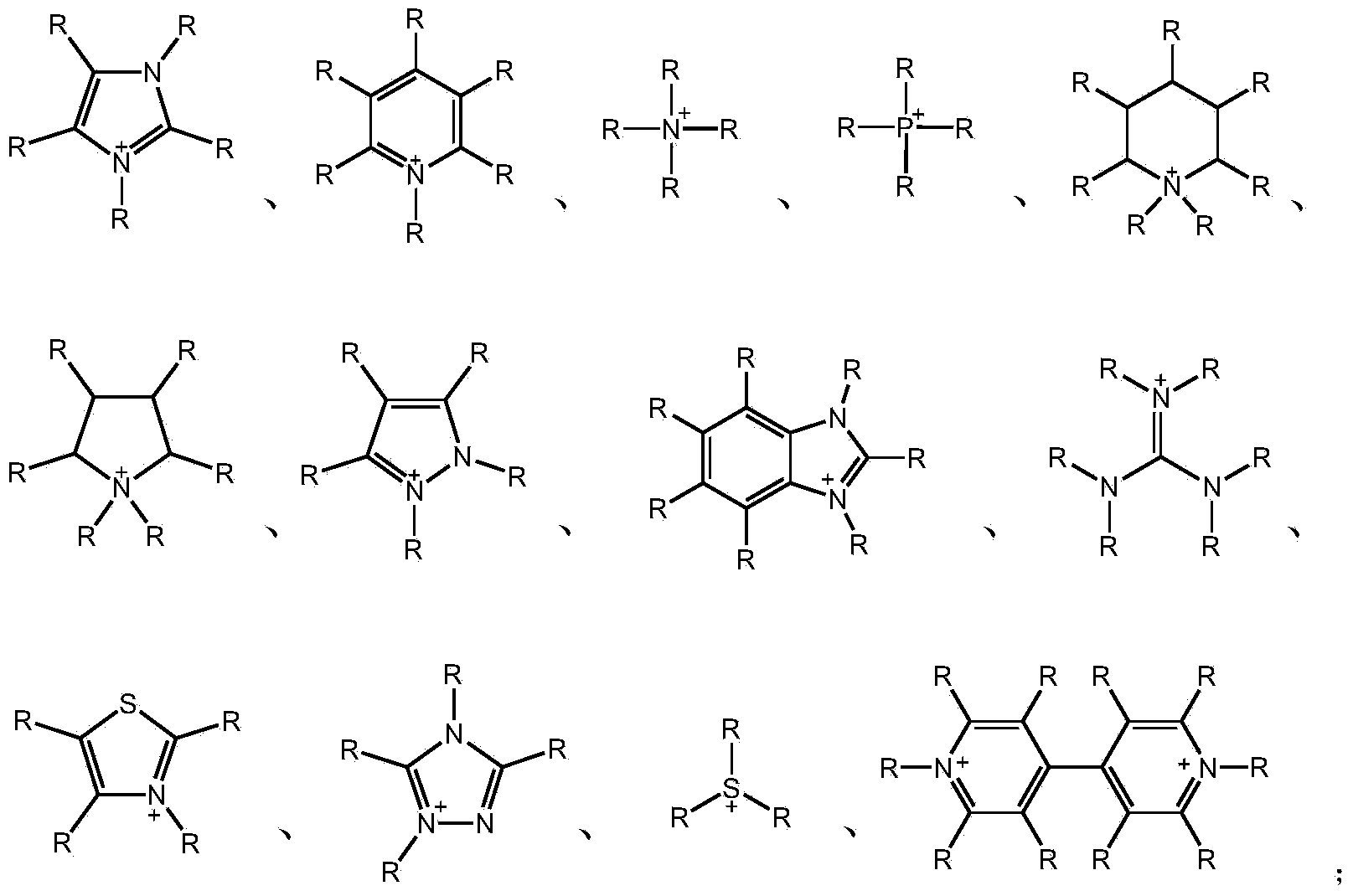Method for preparing levulinic acid from chitin or chitosan directly by catalytic conversion
A technology for catalytic conversion and levulinic acid, applied in chemical instruments and methods, preparation of organic compounds, preparation of carboxylate and other directions, can solve the problems of high technical difficulty, environmental pollution, and high cost, and achieves a simple synthesis method and avoids equipment. Corrosion, stable performance
- Summary
- Abstract
- Description
- Claims
- Application Information
AI Technical Summary
Problems solved by technology
Method used
Image
Examples
Embodiment 1
[0031] Chitosan (0.250g), 1-methyl-3-(3-sulfonic acid) propyl imidazolium bisulfate ([C 3 SO 3 Hmim] HSO 4 ) ionic liquid (1.000g) and distilled water (2.000g) were mixed and reacted at 150°C for 2.5h. The reaction solution was extracted three times with 30 mL of dichloromethane, and the extract was concentrated to obtain levulinic acid with a yield of 13.4%. The ionic liquid could be recycled.
Embodiment 2
[0033] Chitosan (0.250g), 1-methyl-3-(3-sulfonic acid) propyl imidazolium bisulfate ([C 3 SO 3 Hmim] HSO 4 ) ionic liquid (1.000g) and distilled water (2.000g) were mixed and reacted at 160°C for 2.5h. The reaction solution was extracted three times with 30 mL of dichloromethane, and the extract was concentrated to obtain levulinic acid with a yield of 35.0%. The ionic liquid could be recycled.
Embodiment 3
[0035] Chitosan (0.250g), 1-methyl-3-(3-sulfonic acid) propyl imidazolium bisulfate ([C 3 SO 3 Hmim] HSO 4 ) ionic liquid (1.000g) and distilled water (2.000g) were mixed and reacted at 170°C for 2.5h. The reaction solution was extracted three times with 30 mL of dichloromethane, and the extract was concentrated to obtain levulinic acid with a yield of 49.6%. The ionic liquid could be recycled.
PUM
 Login to View More
Login to View More Abstract
Description
Claims
Application Information
 Login to View More
Login to View More - R&D
- Intellectual Property
- Life Sciences
- Materials
- Tech Scout
- Unparalleled Data Quality
- Higher Quality Content
- 60% Fewer Hallucinations
Browse by: Latest US Patents, China's latest patents, Technical Efficacy Thesaurus, Application Domain, Technology Topic, Popular Technical Reports.
© 2025 PatSnap. All rights reserved.Legal|Privacy policy|Modern Slavery Act Transparency Statement|Sitemap|About US| Contact US: help@patsnap.com



